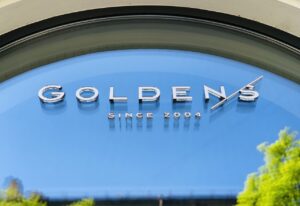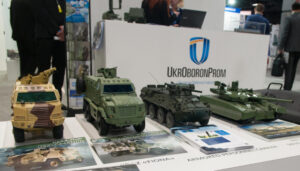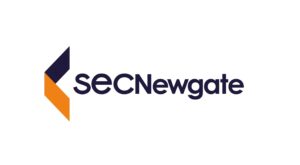
The Transcarpathian school is represented in the selection by works by Yosyp Bokshay, Adalbert Erdeli, Fedir Manailo, Andriy Kotska, Adalbert Borecky, and Ferenc Seman, who combine European education with national tradition. Lviv is represented by works by Oleg Mink, Mykhailo Lishchiner, Odessa by works by Yurii Yegorov, Kostiantyn Lomikin, Valentyn Khrushch, Crimea by a still life by Valentina Tsvetkova, and the Kyiv school by works by Fedir Konovaliuk, Volodymyr Singaivskyi, and Serhii Shyshko.

Abram Manevich (1881-1942)
“Fruit Garden,” 1910s
canvas, oil
51 x 53 cm
Expert opinion by Alan Penzler
The generation of the “Sixties” is reflected in the works of Viktor Zaretsky, Alla Gorskaya, Igor Grigoriev, Anatoly Lymarev, Viktor Grigorov, and Vudon Baklitsky – artists who combined academic mastery with the search for new imagery. The block of classical Ukrainian art is occupied by landscapes by Hryhorii Svitlytskyi, Stepan Kolesnikov, Petro Levchenko, Serhii Shyshko, and Pavlo Horobets. A special place is occupied by the works of Abram Manevych, David Burliuk, Vasyl Khmeliuk, Liuboslav Hutsaliuk, Grigory Kruk, and Oleksiy Gryshchenko, whose works integrate Ukrainian culture into the global artistic context, as well as Maria Prymachenko and Ivan Marchuk, who continue to break auction records and represent Ukrainian culture around the world.

Grigory Svitlytsky (1872-1948)
“Ukrainian Night,” 1917
canvas, oil
78 x 115 cm
Signed and dated lower left
The top lots of the current auction are rare works: “Ukrainian Night” (1917) by Hryhorii Svitlytskyi, “Fruit Garden” (1910s) by Abram Manevych, “Blooming Magnolia” (1930s) by Adalbert Erdeli, “In a Cafe” (1964) by Igor Grigoriev, “Flower Dance” (1960s) by Alla Gorskaya, ‘Motherhood’ (1984-1985) by Anatoly Lymarev, “Hutsul Girl with a Rooster” (1967) and “By the Window” (1969) Mykola Glushchenko, “Eyes of Autumn” (1985) Viktor Zaretsky, “Moonlit Night” (1980) Ivan Marchuk, sculpture ‘Football’ (1983) Oleg Kostkevich, “Girl with a Ball” (1998) Yuri Yegorov.

Adalbert Erdeli (1891-1955)
“Blooming Magnolia,” 1930s
canvas, oil
100 x 121 cm
Signed lower right
The 70th anniversary auction “Ukrainian Collectible Art” showcases a wide selection of unique works of Ukrainian art from the 20th century. The exhibition will be open to visitors from October 2 to 9 in the Goldens auction house hall, as well as online at www.gs-art.com. For questions regarding registration and participation in the auction, please call +38 050 462 95 32 or register on the website to be able to place online bids yourself.
Schedule of the exhibition and online auction:
October 2–9, 2025
12:00 p.m. – 7:00 p.m.
Open every day.
Admission to the exhibition is free.
The final bidding will begin with the sequential closing of lots on October 9 (Thursday) at 7:00 p.m. online at www.gs-art.com.
Address: Kyiv, 4 Leonida Pervomaiskoho Street
GOLDENS Auction House
+38 050 462 95 32
contact@gs-art.com
www.gs-art.com

Ukraine and Poland have overtaken the Netherlands to become the largest suppliers of eggs to the UK in 2025, prompting criticism of imports of “cage” eggs, which have been banned in the UK since 2012. This was reported by The Guardian newspaper.
According to the UK’s Animal and Plant Health Agency, Ukraine has exported 8 million kg of eggs to the country since the beginning of the year, Poland has exported almost 7 million kg, and Spain has exported about 5 million kg.
Despite the overall decline in tonnage, the number of shipments has increased — instead of large batches, many small batches began to be exported from countries where cage farming is still common.
Mark Williams, chairman of the British Egg Industry Council, said that British producers are at a disadvantage because they have to invest in stricter standards for keeping birds. At the same time, imported eggs from Ukraine and Poland come from systems that are banned in the UK. He called this “morally wrong” and called on the government to take measures to protect the domestic market.
Egg imports are mostly destined for the catering and food industry segments, rather than supermarkets (where British Lion-labeled eggs dominate). It is estimated that the UK produces about 88% of its own eggs, importing the remaining 12%.
The British government has stated that it is involved in working on new regulations to level the playing field for domestic producers. At the same time, tariff exemptions for Ukraine were extended for many goods after the start of the war, but the “eggs and poultry” category received only a short-term deferral.
Source: https://open4business.com.ua/ukrayina-stala-najbilshym-postachalnykom-yayecz-do-velykoyi-brytaniyi/

The Cabinet of Ministers of Ukraine has decided to restrict access to public data on defense industry enterprises in state registers for the duration of martial law.
According to Prime Minister Yulia Svyrydenko, the decision was made at the request of Ukrainian arms manufacturers in order to increase their security and protection from Russian attacks and sabotage.
According to her, the restriction will apply exclusively to defense industry enterprises and only for the duration of martial law.
The government emphasizes that the new rule will not affect the reporting of enterprises to state bodies and partners within the framework of existing contracts.

Global communications group SEC Newgate has opened an office in Ukraine that will specialize in crisis and reputation management, corporate communications, advocacy, and GR.
“The opening of the office of a global corporation ranked 19th in the world rankings was planned a year ago, and all this time preparations for investments, determination of approaches and main directions were underway,” wrote Artem Bidenko, a member of the board of SEC Newgate Ukraine.
He added that significant progress in the group’s work in Ukraine and the visit to its opening in Kiev these days by the head and founder of the SEC Newgate group, Fiorenzo Tagliabue, was achieved at the conference on the restoration of Ukraine in Rome, URC2025.
It is noted that Andriy Rudenko became the director of the Ukrainian company, and Serhiy Bidenko, founder of Reputation Antistress (Bayka.agency), became an advisor.
SEC Newgate has offices in 32 countries. The Ukrainian office will support local companies in entering international markets, advise foreign clients on investments in Ukraine, and be involved in the country’s recovery processes.

Experts warn that automatic hand dryers, despite their convenience, can be a source of bacteria and germs. Studies show that the hot air blown by dryers can draw germs from the air in restrooms and spray them around—onto hands, surfaces, and into the room itself.
In one experiment cited by the Harvard Medical Portal, Petri dishes placed under a working dryer for 30 seconds showed growth of up to 254 bacterial colonies, while control dishes exposed only to the air in the restroom without a dryer showed only one colony.
When researchers installed HEPA filters on the dryers, the number of bacteria decreased by 75%, suggesting that a significant portion of the contamination comes from the indoor air rather than from the internal parts of the device.
Another study, published in the journal Aerosols and Bacteria From Hand Washing and Drying in Indoor Air, compared dryers with paper towels. The results: aerosol and bacteria concentrations after drying hands indoors increase regardless of the method used — dryers or towels.
Another study, Assessment of the bacterial contamination of hand air dryers, showed that dryers produce more “ballistic droplets” that travel further into the room and may contain skin microbes. The authors note that in some cases, dryers can deposit pathogenic bacteria on users’ hands and clothing, especially if the device is located close to the sink or when the air humidity is high.
In addition, the American publication “Automatic Hand Dryers Can Be a Source of Microbial Contamination” states that the internal parts of dryers — the body and nozzles — may contain staphylococci and coliform bacteria. When the device is turned on, these microbes can be transferred to the user’s hands. According to researchers’ estimates, in men’s and women’s restrooms, the internal surfaces of dryers contain an average of 300 microorganisms per 5 cm² in the lower part of the body.
Estimated number of population in regions of Ukraine based on number of active mobile sim cards (mln)

Source: Open4Business.com.ua